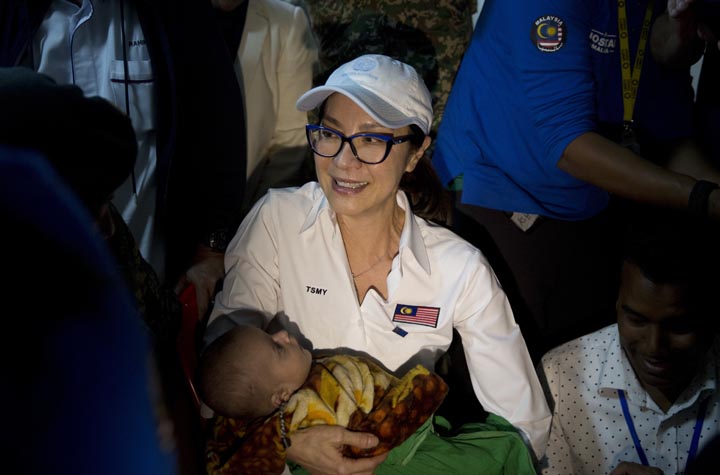ALONG the Bangladesh-Myanmar border—From their home, a tent hastily erected in a grassy field, the young Muslim Rohingya couple can see the village they left behind last year, fleeing attacks by Buddhist mobs and Myanmar security forces.
They arrived in a “no man’s land”—one of the small, ill-defined areas that exist at the cloudiest edges of the borderlands, places that seem to be neither Myanmar nor Bangladesh.
While nearly every other Rohingya refugee who crossed the border has sought protection in the immense camps a few miles deeper into Bangladesh, these people say they will go no farther.
“My ancestors’ graves are there,” said Abdul Naser, gesturing toward his village, less than 100 meters away. “Sometimes, I walk close to the barbed wire fence and touch my land, and I cry in the dark.”
But a few weeks ago, things changed. Myanmar deployed more soldiers to the border, some of whom began coming to within 10 meters of the refugees’ homes. They shout insults at the Rohingya, and they throw empty whiskey bottles, the refugees say. They have set up speakers that blare announcements, insisting people go farther into Bangladesh. Because to Myanmar, no man’s land doesn’t exist at all.
“We cannot accept the term no man’s land because that is our land,” said Nyan Myint Kyaw, Myanmar’s deputy commander of the border police.
Shifting rivers may have washed away some border markers, he says, and fences may not have been erected everywhere. But he insists the 6,000, or so Rohingya who think they live between the two countries are actually living inside Myanmar.
It is easy to get confused on the border, where many areas are not marked at all and where it’s sometimes unclear if a fence marks someone’s personal land, or if it demarcates the frontier.
Making things more complicated, Myanmar places its border fences 45 meters from the actual boundary line.
While Myanmar insists all the hazy territory is their land, its security forces—as well as Bangladesh security forces—are also very careful to avoid entering places seen as a no man’s land, presumably fearing accidental clashes and diplomatic trouble.
Myanmar says the additional soldiers were deployed to stop possible cross-border attacks by Rohingya militants, though no such attacks are known to have occurred.
When Bangladesh protested the deployments, Myanmar dismissed their complaints.
“This is not like we are trying to
invade Bangladesh,” Myanmar Spokesman Zaw Htay said in early-March. “These are only actions taken against the terrorist groups.”
The Rohingya have long lived at the ragged fringes of life in Myanmar,
denied citizenship and many of the most basic rights.
They are derided as “Bengalis,” and many in Myanmar believe they are illegal migrants from Bangladesh. Muslims in an overwhelmingly Buddhist nation, most live in poverty in Myanmar’s Rakhine state, next to Bangladesh. The most recent problems began in August, when Rohingya insurgents launched a series of unprecedented attacks on Myanmar security posts.
Myanmar responded with overwhelming force, burning Muslim villages with the help of Buddhist mobs, raping women, looting homes and carrying out massacres.
Some 700,000 Rohingya fled the attacks into Bangladesh. Aid groups say more than 6,700 people
were killed.
The United Nations refugee agency has appealed for protection for the borderland Rohingya.
The agency “is concerned about the safety of a group of vulnerable Rohingya women, men and children from Myanmar, who have been living in a so-called no man’s land,” the agency said in a statement. “People who have fled violence in their country must be granted safety and protection.”
But is the no man’s land inside Myanmar? Even the Rohingya say some of it probably is, though there are plenty of places where even border guards aren’t sure where to find the dividing line.
A Rohingya community leader says most of the 6,000 in the borderlands are from nearby villages.
“They do not want to leave the place or enter Bangladesh, hoping that they will go back one day and it will be easier to move from here,” Dil Mohammed said. The young Rohingya couple agreed with him. They want to keep their village in sight. Or at least what’s left of it.
“My trees are still there,” said Naser’s wife, 20-year-old Ruksana Begum. “It’s spring now. I can see the green leaves of my mango trees. They have burned our homes, but my trees are still growing.”
Image credits: AP/Bernat Armangue






























